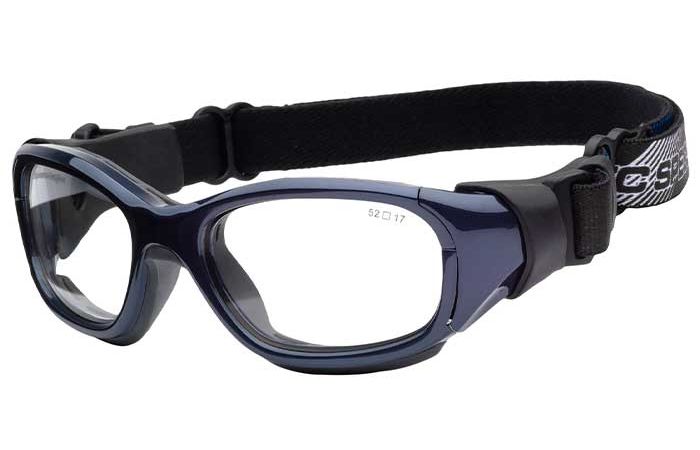The Dawn of Spatial Computing: Analyzing Apple’s Grand AR Vision
For years, the technology world has been abuzz with whispers and rumors about Apple’s foray into augmented and virtual reality. Now, with the arrival of the Apple Vision Pro, the speculation has materialized into a tangible, powerful platform that promises to redefine personal computing. This isn’t just another headset; it’s the cornerstone of a new “spatial computing” era, deeply integrated into the vast and mature Apple ecosystem. The latest Apple AR news isn’t just about a single product launch; it’s about the seismic shift this technology represents for everything from how we work and play to how we interact with our digital lives. This article provides a comprehensive technical analysis of Apple’s AR strategy, exploring the Vision Pro’s capabilities, its profound integration with other Apple devices, and the long-term implications for developers, consumers, and the industry at large. We’ll move beyond the initial hype to dissect the hardware, software, and strategic vision that positions Apple as a formidable force in the next wave of computing.
Section 1: Deconstructing the Vision Pro – The Foundation of Apple’s AR Future
At the heart of the latest Apple Vision Pro news is a device engineered with meticulous detail, setting a new benchmark for consumer mixed-reality hardware. Understanding its core components is crucial to appreciating the broader strategy. Unlike many competitors that prioritize gaming, Apple has positioned the Vision Pro as a spatial computer, a device for productivity, communication, and entertainment, seamlessly blending the digital and physical worlds.
Hardware Prowess: The Dual-Chip Architecture
The Vision Pro’s performance is driven by a unique dual-chip setup. The main processor is the Apple M2 chip, the same powerhouse found in modern MacBooks and iPads. This handles the core operating system, visionOS, and runs complex applications, ensuring a smooth and responsive user experience. However, the real innovation lies in the brand-new R1 chip. This co-processor is dedicated exclusively to processing input from the device’s staggering array of 12 cameras, five sensors, and six microphones. The R1’s primary function is to stream images to the displays within 12 milliseconds—eight times faster than the blink of an eye. This virtually eliminates the latency that causes motion sickness in many other VR/AR headsets, a critical hurdle for mainstream adoption. This focus on user comfort is a classic Apple approach, prioritizing experience over raw specs on a page.
Software and User Interface: Introducing visionOS
The Vision Pro runs on visionOS, a new operating system built on the foundations of macOS, iOS, and iPadOS. This shared architecture is a strategic masterstroke. It allows developers to leverage existing frameworks like SwiftUI, RealityKit, and ARKit to create spatial experiences, dramatically lowering the barrier to entry. The latest iOS updates news often hints at underlying changes that support this new platform, ensuring that the entire Apple ecosystem news cycle is interconnected. The user interface is entirely new, controlled not by physical controllers but by a user’s eyes, hands, and voice. Users look at an element to select it, tap their fingers together to click, and use Siri for voice commands. This intuitive, controller-free interaction model is central to Apple’s vision of making spatial computing feel natural and accessible, a stark contrast to the controller-centric approach of many competitors.
Privacy and Security by Design
In line with long-standing company principles, the latest Apple privacy news heavily emphasizes the security measures built into Vision Pro. The device features Optic ID, a new secure authentication system that uses the uniqueness of a user’s iris to unlock the device, authorize Apple Pay purchases, and sign into apps. Critically, where a user is looking remains private. Eye-tracking information is processed at the system level and is never shared with Apple, third-party apps, or websites. This commitment to iOS security news principles is a major differentiator in an era of data-hungry tech products and will be a key factor in building consumer trust.

Section 2: The Power of Integration – How Vision Pro Unifies the Apple Ecosystem
The true genius of Apple’s AR strategy lies not in the Vision Pro as a standalone device, but in its role as the new hub of the Apple ecosystem. It’s designed to work in concert with the devices users already own and love, enhancing their functionality and creating a cohesive, multi-device experience that no competitor can easily replicate.
Seamless Connectivity with iPhone, iPad, and Mac
The Vision Pro acts as an infinite, portable display for your Mac. With Mac Virtual Display, users can wirelessly bring their Mac’s screen into their spatial environment, placing it anywhere they want and resizing it to an enormous scale. This transforms a 13-inch MacBook Air into a private theater with multiple 4K displays. The latest iPhone news and iPad news also point to deeper integration, with apps like FaceTime becoming “Spatial FaceTime,” where participants appear as life-sized Personas in the user’s space. The potential for creative applications, such as using an iPad as a digital canvas or a “iPad vision board news” tool within the Vision Pro’s infinite workspace, is immense. This synergy turns the Vision Pro from an isolated experience into a powerful extension of a user’s existing workflow.
An Immersive Sensory Experience with AirPods and Apple Watch
Audio is a critical component of immersion, and this is where the latest AirPods news becomes highly relevant. While the Vision Pro has its own integrated spatial audio system, pairing it with AirPods Pro news-worthy features like Personalized Spatial Audio and dynamic head tracking creates an unparalleled auditory experience. The H2 chip in the AirPods Pro enables ultra-low-latency audio, ensuring perfect synchronization with the visuals on screen. Furthermore, insights from Apple Watch news suggest future health and fitness applications. The Watch’s advanced sensors could provide biometric feedback during AR workouts or wellness experiences, creating a feedback loop between physical activity and virtual content. This deep integration of Apple health news into the AR space opens up entirely new possibilities for personalized training and mindfulness.
Expanding the Smart Home and Entertainment Hub
The Vision Pro is also poised to become the ultimate home entertainment device. The latest Apple TV news often focuses on high-quality content, and the Vision Pro is the perfect platform to consume it. It can create a virtual cinema screen that feels 100 feet wide, with full support for 4K HDR and Spatial Audio. Its integration with the smart home, potentially controlled via Siri and linked to devices like the HomePod, also shows promise. Imagine adjusting your smart lights to match the movie you’re watching directly from the Vision Pro interface. This connects the dots between HomePod news, HomePod mini news, and the broader spatial computing vision, making the user’s environment interactive and responsive.
Section 3: The Road Ahead – Future Applications and Accessories
The first-generation Vision Pro is just the beginning. Apple’s history, from the original iPod to the first iPhone, shows a pattern of launching a revolutionary V1 product and then relentlessly iterating. The future of Apple AR news will be defined by software advancements, new hardware, and an explosion of third-party applications.
The Evolving World of Vision Pro Accessories

While the primary control method is hands-and-eyes, there is significant speculation around future peripherals. The latest Vision Pro accessories news hints at more precise input methods for specific tasks. For instance, a rumored “Vision Pro wand news” could offer haptic feedback and precision for creative professionals or gamers. Similarly, an advanced “Apple Pencil Vision Pro news” could allow artists and designers to draw and sculpt in 3D space with unparalleled accuracy. Even existing accessories like the AirTag could find new life; imagine an app that uses AirTag news technology to locate and identify real-world objects within your AR view. These accessories will expand the device’s utility from a consumption and light-productivity tool to a full-fledged creation station.
Speculation and Historical Parallels: Lessons from the iPod
To understand Apple’s long-term vision, it’s helpful to look at its history. The initial iPod news positioned it as a simple music player, but it evolved into a platform that changed the entire music industry. We can see similar potential here. Just as the original iPod Classic news gave way to the iPod Mini news, iPod Shuffle news, and eventually the app-capable iPod Touch news, we can expect a future lineup of AR devices from Apple. Perhaps a lighter, glasses-style device for all-day wear, or a more focused, lower-cost model for specific use cases. Some have even floated ideas of an “iPod revival news” in the form of a dedicated spatial media player, though this remains purely speculative. The key takeaway is that Apple is playing the long game, and the Vision Pro is the first move in a multi-generational strategy.
Real-World Applications and Case Studies
Beyond entertainment, the Vision Pro is set to revolutionize professional fields.
- Healthcare: Surgeons can overlay 3D medical scans onto a patient during an operation for enhanced precision. Medical students can perform virtual dissections in a realistic, interactive environment.
- Engineering and Design: Architects can walk through a full-scale virtual model of a building before construction begins. Automotive engineers can collaborate on 3D prototypes in a shared virtual space from anywhere in the world.
- Education and Training: Students can take virtual field trips to ancient Rome or the surface of Mars. Technicians can receive guided AR instructions overlaid on complex machinery they are repairing.
Section 4: Recommendations and Best Practices for the Spatial Era
As we enter this new era of spatial computing, both developers and consumers need to adapt their thinking. The transition requires a new set of rules and considerations, from interface design to privacy management.

For Developers: Thinking in Three Dimensions
Creating compelling experiences for visionOS requires a fundamental shift from 2D to 3D design.
- Embrace Natural Input: Design interfaces that feel intuitive with eye and hand tracking. Avoid small, clustered buttons that are difficult to target with a gaze. The latest Siri news also highlights the importance of robust voice command integration.
- Respect User Space: Don’t overwhelm the user by placing UI elements too close to their face. Use depth and scale to create a comfortable, organized environment.
- Prioritize Performance: Given the high-resolution displays and need for low latency, optimization is key. A dropped frame in a spatial environment is far more jarring than on a phone screen.
For Consumers: Considerations Before Adoption
The Apple Vision Pro is a significant investment, and potential buyers should weigh its capabilities against their needs.
- Understand the Use Case: Is it for productivity, entertainment, or creative work? The value proposition is strongest for those who can leverage it as a Mac accessory or a premium media device.
- Consider the Ecosystem: The Vision Pro’s power is magnified for users already invested in the Apple ecosystem. The seamless integration with Mac, iPhone, and AirPods is a primary selling point.
- Privacy Awareness: While Apple has strong privacy controls, users should still be mindful of the permissions they grant to third-party apps in this new, highly personal computing environment. This is a core part of the ongoing Apple accessories news and software narrative.
Conclusion: The First Step on a Long Journey
The launch of the Apple Vision Pro is a landmark event in technology, marking Apple’s official entry into the next great computing paradigm. It is a device that showcases breathtaking engineering, intuitive design, and the unparalleled power of a deeply integrated ecosystem. The flood of Apple AR news and Apple Vision Pro news is not just about a single piece of hardware; it’s about the dawn of a platform. While the initial cost is high and mainstream adoption will take time, the foundation has been laid. By leveraging the strengths of its existing products—from the processing power of the Mac to the audio fidelity of AirPods—Apple has created a spatial computer that is more than the sum of its parts. The road ahead will be filled with innovation, new applications, and a gradual reshaping of our digital interactions. The Vision Pro is not the final destination; it is the bold, ambitious first step into Apple’s spatial future.











